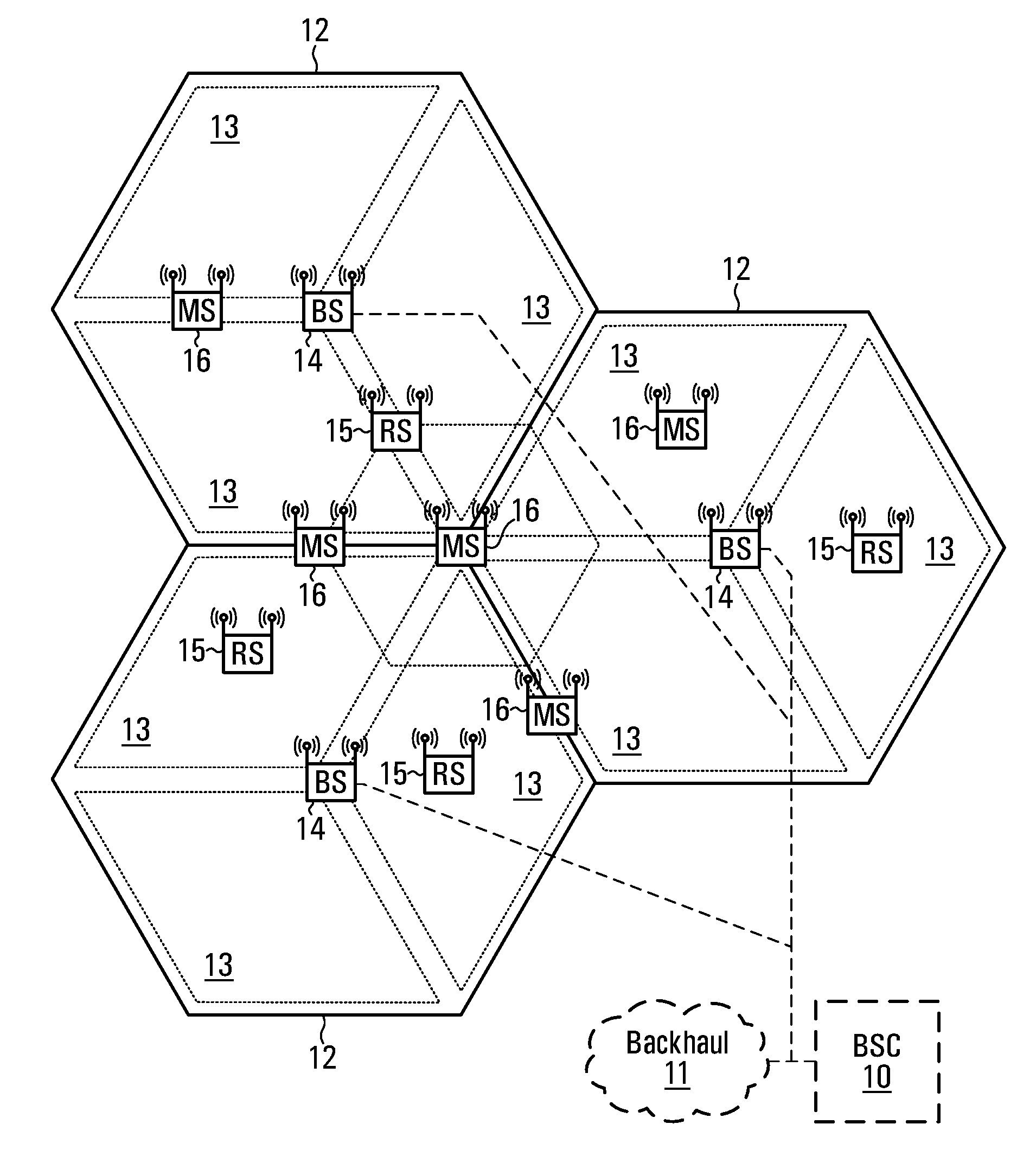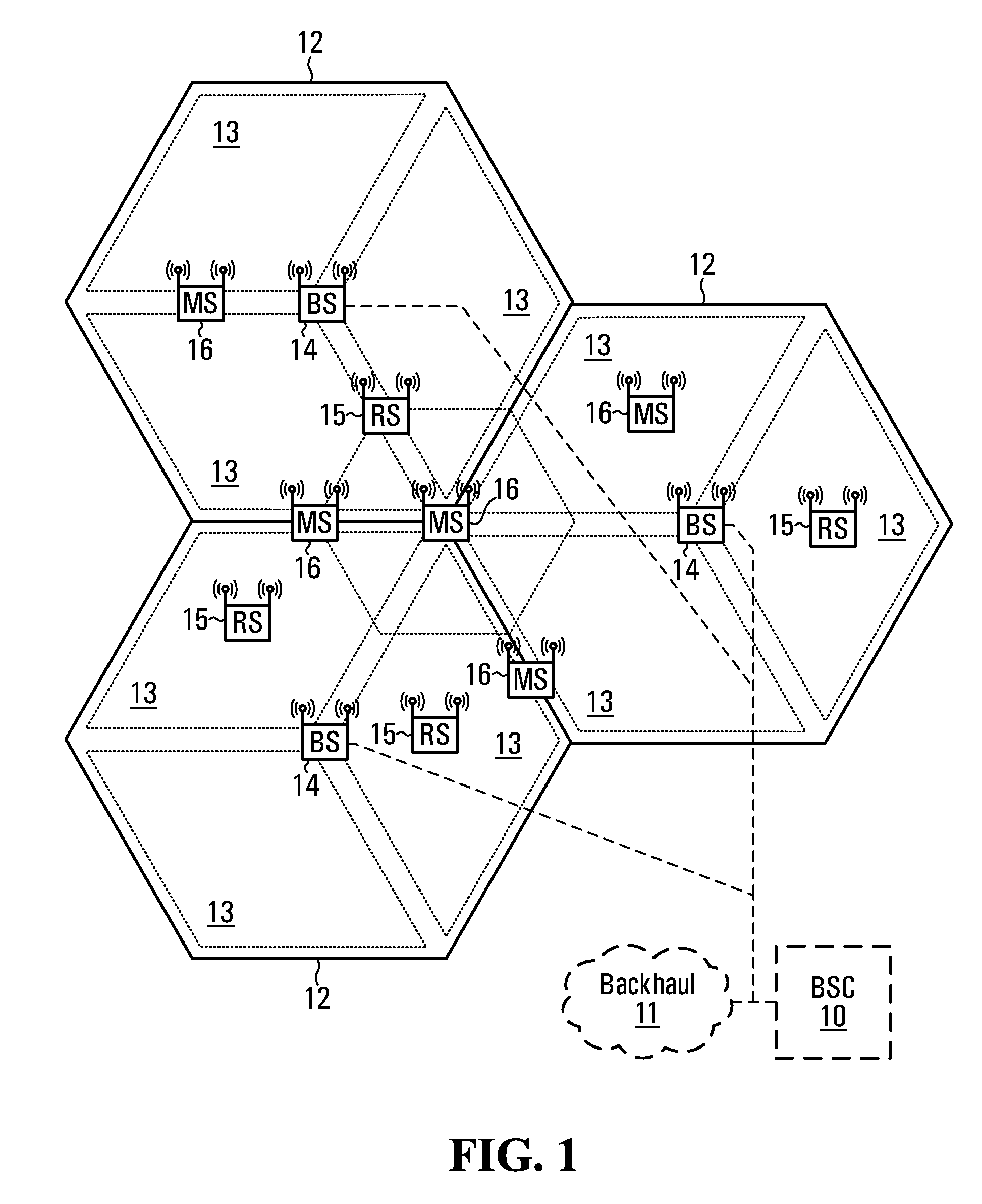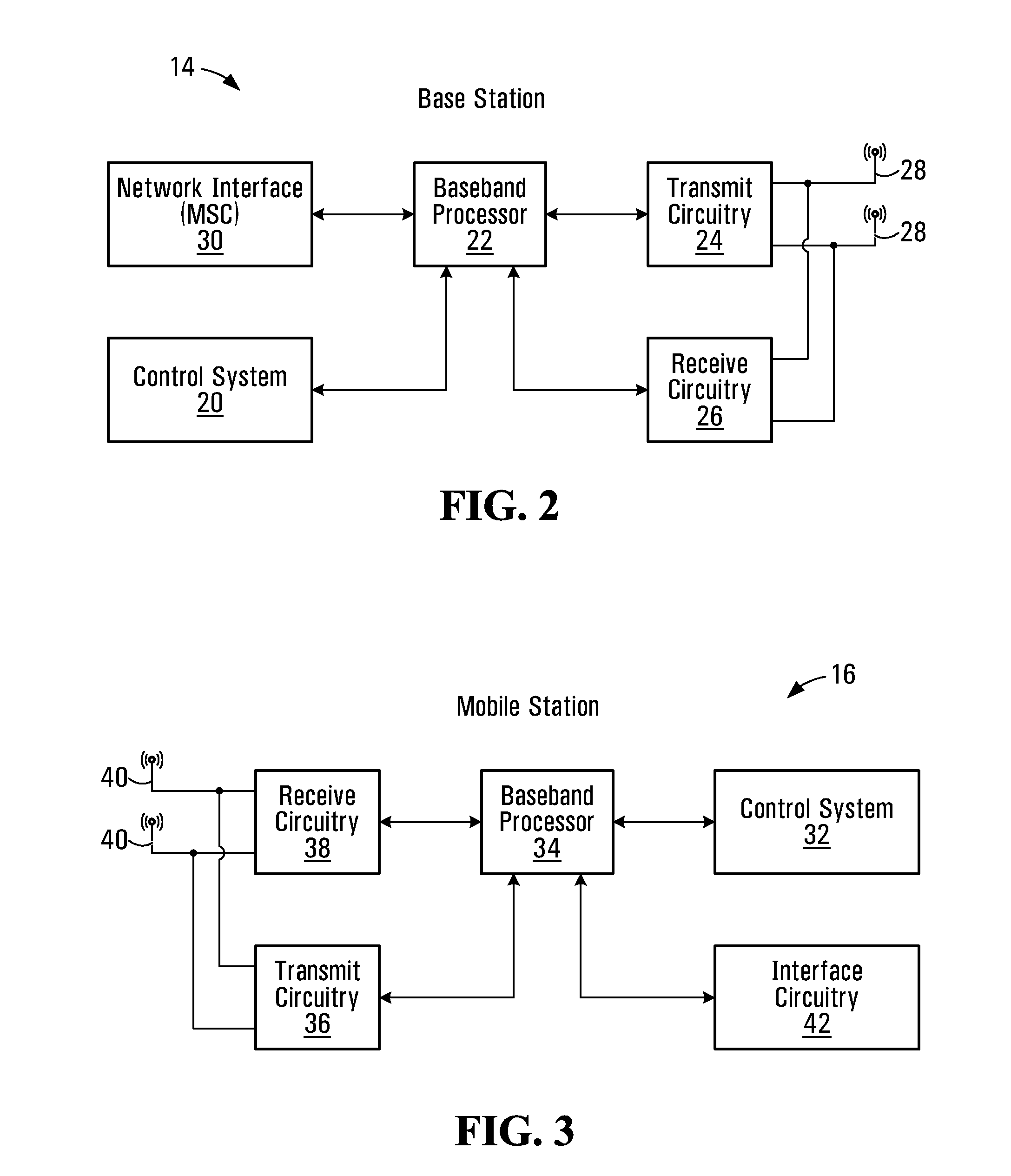Optimizing downlink communications between a base station and a remote terminal by power sharing
a power sharing and remote terminal technology, applied in the field of base, can solve the problems of difficult solution, feasibility and optimality, and nonlinear optimization, and achieve the effect of increasing the geometry
- Summary
- Abstract
- Description
- Claims
- Application Information
AI Technical Summary
Benefits of technology
Problems solved by technology
Method used
Image
Examples
second embodiment
[0090]In the embodiment described above, the reference geometry value, the reference MCS power value and a corresponding reference MCS were predefined. It is also possible however to set the reference geometry value, the reference MCS and the reference MCS power value according to the geometries of the users, as discussed below, in accordance with the invention. For example, after sorting the user ID, geometry value and MCS power value tuples by geometry value, as shown in FIG. 18, the highest geometry value of 10 can be compared to the reference table 218 shown in FIG. 16 to determine that the MCS power value is 5, the corresponding MCS is QPSK ½, and the low end of the geometry range for this MCS power value is 6.5. Thus, after executing block 216 in FIG. 14, for example, where MCSs and MCS power values are associated with respective users, the processor circuit 21 may be directed to execute optional block 217 which directs the processor circuit to find the highest MCS by comparin...
first embodiment
[0091]Then the processor circuit 21 is directed to block 229 which causes the processor circuit to assign as the reference MCS the highest MCS found at block 217 and to assign as the reference MCS power value, the corresponding MCS power value from the reference table 218 and to assign as the reference geometry value, the low end of the geometry range associated with that highest MCS power value. Then, processing continues as described above at block 230. Referring to FIG. 14 and FIG. 25, it can be seen that the reference geometry (6.5) is much higher than the earlier predefined reference geometry 5.2 of the first embodiment and therefore the additions to the power pool are much less, amounting to a total power pool value of 6.7, as shown at the power pool buffer 240.
[0092]Referring to FIGS. 14 and 26, when the processor circuit 21 is directed to block 244 to associate increased geometry values with at least some of the low power users until the power pool is depleted, the processor...
PUM
 Login to View More
Login to View More Abstract
Description
Claims
Application Information
 Login to View More
Login to View More - R&D
- Intellectual Property
- Life Sciences
- Materials
- Tech Scout
- Unparalleled Data Quality
- Higher Quality Content
- 60% Fewer Hallucinations
Browse by: Latest US Patents, China's latest patents, Technical Efficacy Thesaurus, Application Domain, Technology Topic, Popular Technical Reports.
© 2025 PatSnap. All rights reserved.Legal|Privacy policy|Modern Slavery Act Transparency Statement|Sitemap|About US| Contact US: help@patsnap.com



